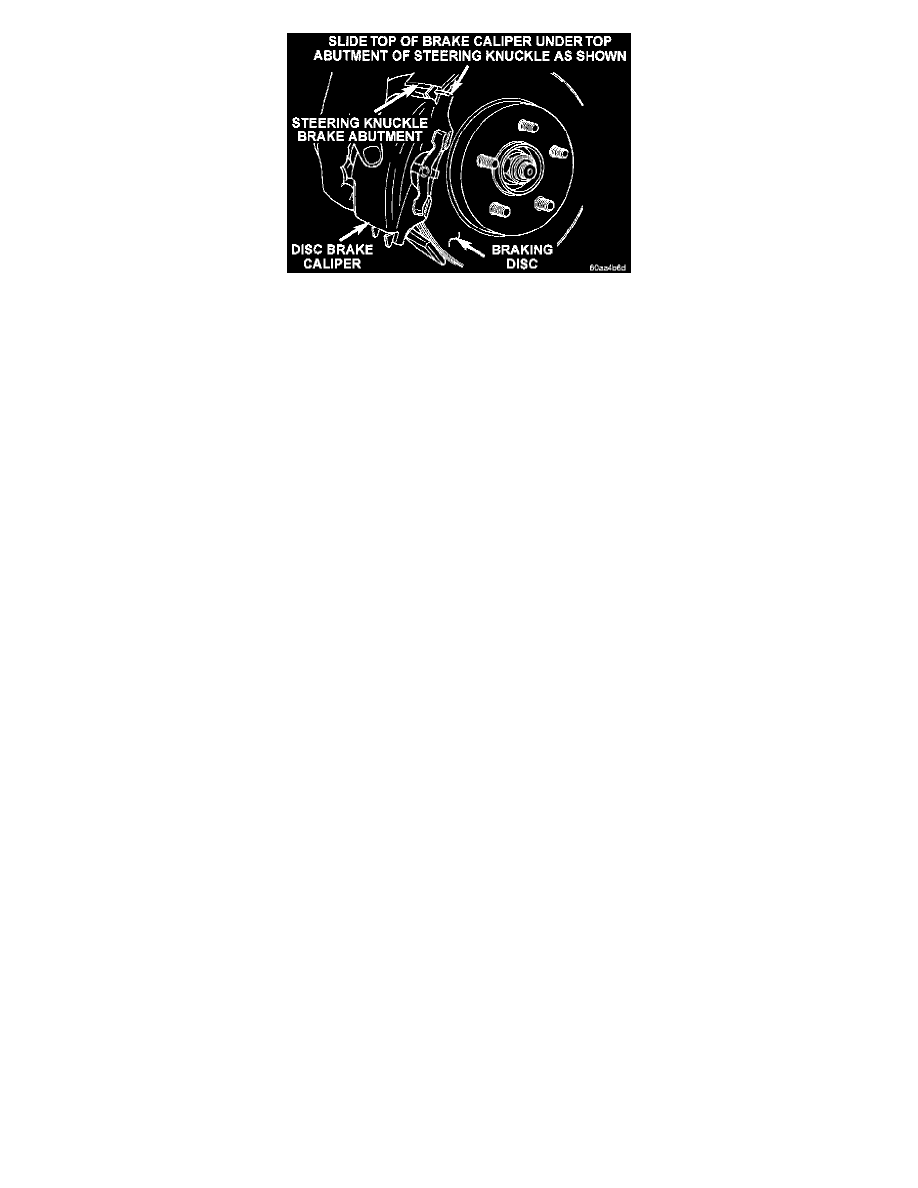Neon L4-2.0L VIN C (1998)

Installing Caliper On Steering Knuckle
7. Carefully position the brake caliper and brake shoes over the rotor by hooking the end of the caliper under the steering knuckle. Then rotate caliper
into position on steering knuckle.
8. Install the caliper guide pin bolts and tighten to 18 - 20 Nm (192 inch lbs.). Extreme caution should be taken not to cross thread the caliper guide
pin bolts.
9. Install the wheel and tire assembly.
10. Tighten the wheel mounting stud nuts in proper sequence until all nuts are torqued to half specification. Then repeat the tightening sequence to the
full specified torque of 135 Nm (100 ft. lbs.).
11. Remove jackstands or lower hoist. Before moving vehicle, pump the brake pedal several times to insure the vehicle has a firm brake pedal.
12. Road test the vehicle and make several stops to wear off any foreign material on the brakes and to seat the brake pads.
Cleaning and Inspection
BRAKE PAD LINING WEAR
If a visual inspection does not adequately determine the condition of the lining, a physical check will be necessary. To check the amount of lining
wear, remove the wheel and tire assemblies, and the calipers.
Remove the front disc brake shoes.
The combined brake shoe and lining material thickness should be measured at the thinnest part of the assembly.
When a set of brake shoes are worn to a total thickness of approximately 7.95 mm (6/16 inch) they should be replaced.
Replace both brake shoe assemblies (inboard and outboard). It is necessary that both front wheel sets be replaced whenever brake shoe assemblies
on either side are replaced.
If the brake shoe assemblies do not require replacement, reinstall, the assemblies making sure each brake shoe is returned to the original position.
